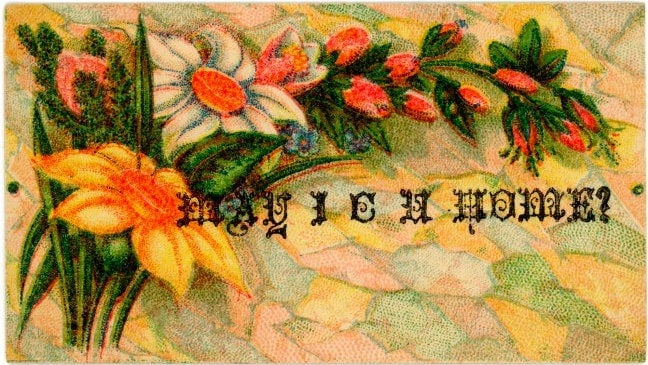“Our Sofa Holds Just Two” and other hot Victorian pickup lines
For all the moaning about modern dating culture—The Tinder! The sexting! The ghosting!—finding love has always been a complicated affair.


For all the moaning about modern dating culture—The Tinder! The sexting! The ghosting!—finding love has always been a complicated affair.
For proof, look no further in the archives of discarded mating rituals than the “flirtation cards” popular in the US in the late 19th century.
Also known as acquaintance cards, these little cardboard notes priced at less than a penny were a lighthearted way for a man to indicate interest in a woman. (Socially-sanctioned romantic overtures initiated by women or gay men were still a good century away.)
“To the unrefined or under-bred, the visiting card is but a trifling and insignificant bit of paper,” wrote Abby Buchanan Longstreet in 1878’s Social Etiquette of New York (h/t Smithsonian Magazine), “but, to the cultured disciple of social law, it conveys a subtle and unmistakable intelligence.”
Collector Alan Mays, featured by National Geographic in a recent article about the cards’ place in history, has amassed a fascinating trove of these artifacts of American romantic life. We looked to see if this subtle and unmistakable wit holds up today. (All images courtesy of Alan Mays.)
Respectful. Straightforward. Gives the lady an out and the gentleman the opportunity to spend his half-cent elsewhere.
What is more romantic than a poem a man has written for you and then mass-printed so there’s another handy if someone better comes along?
Consent is important. Mitten means no!
Add an artful rendering of a man’s genitals and this is the Belle Epoque equivalent of Craigslist’s Casual Encounters.
“We have the same skin tone and your house is on my commute. Might as well.”
This guy’s great-grandfather.
No. There cannot have been a moment in history when this “Squeezemburg” line worked.